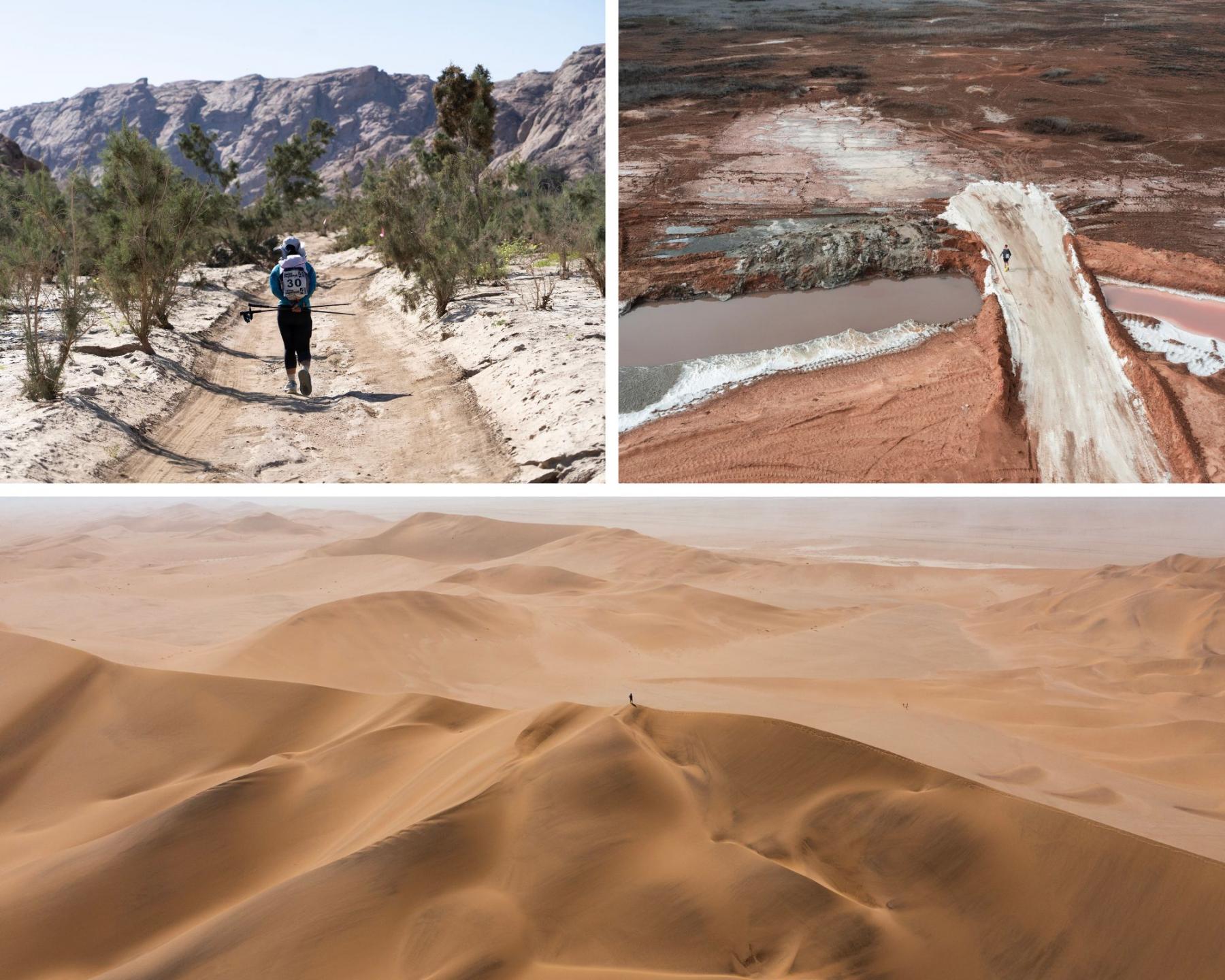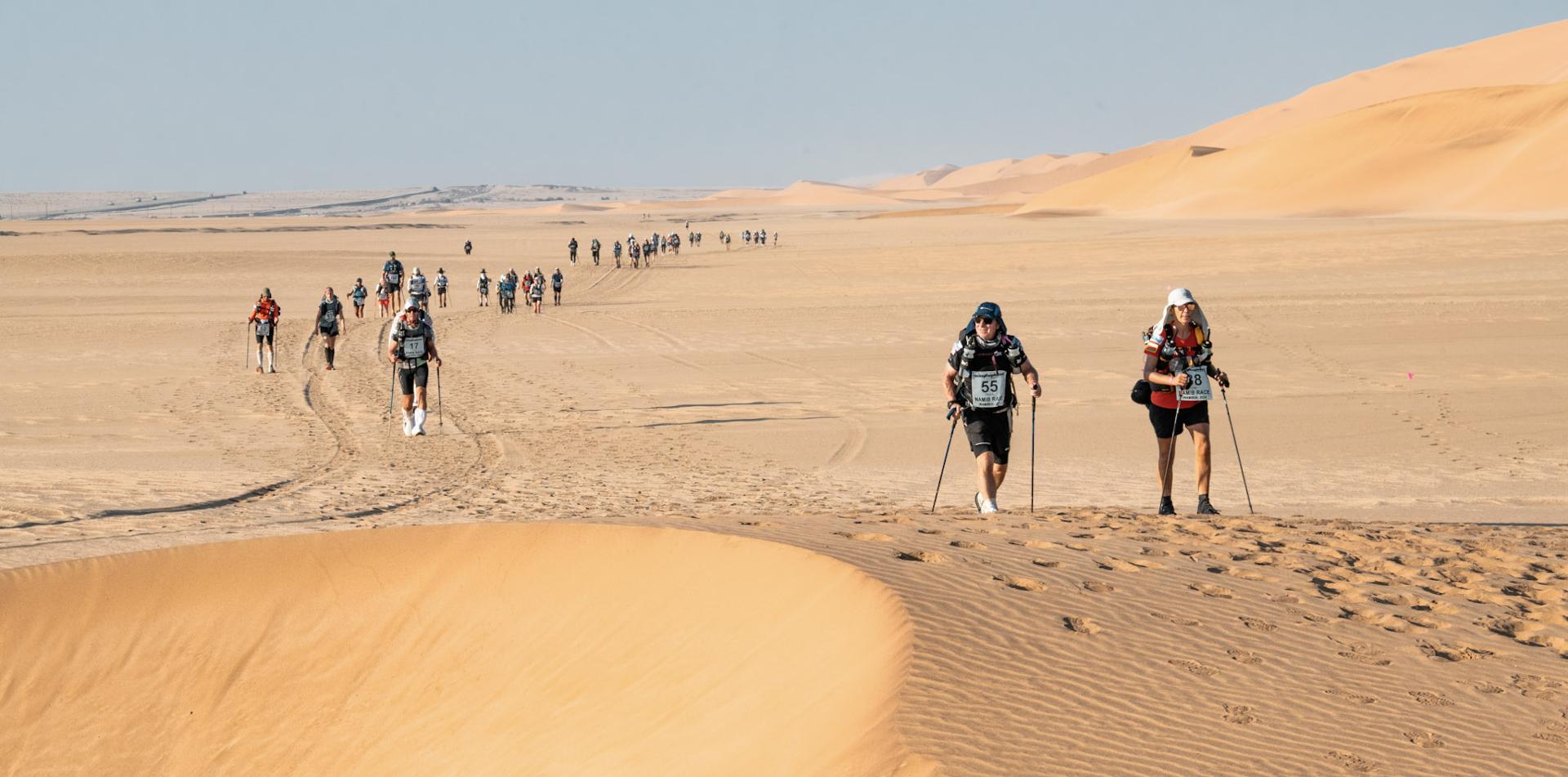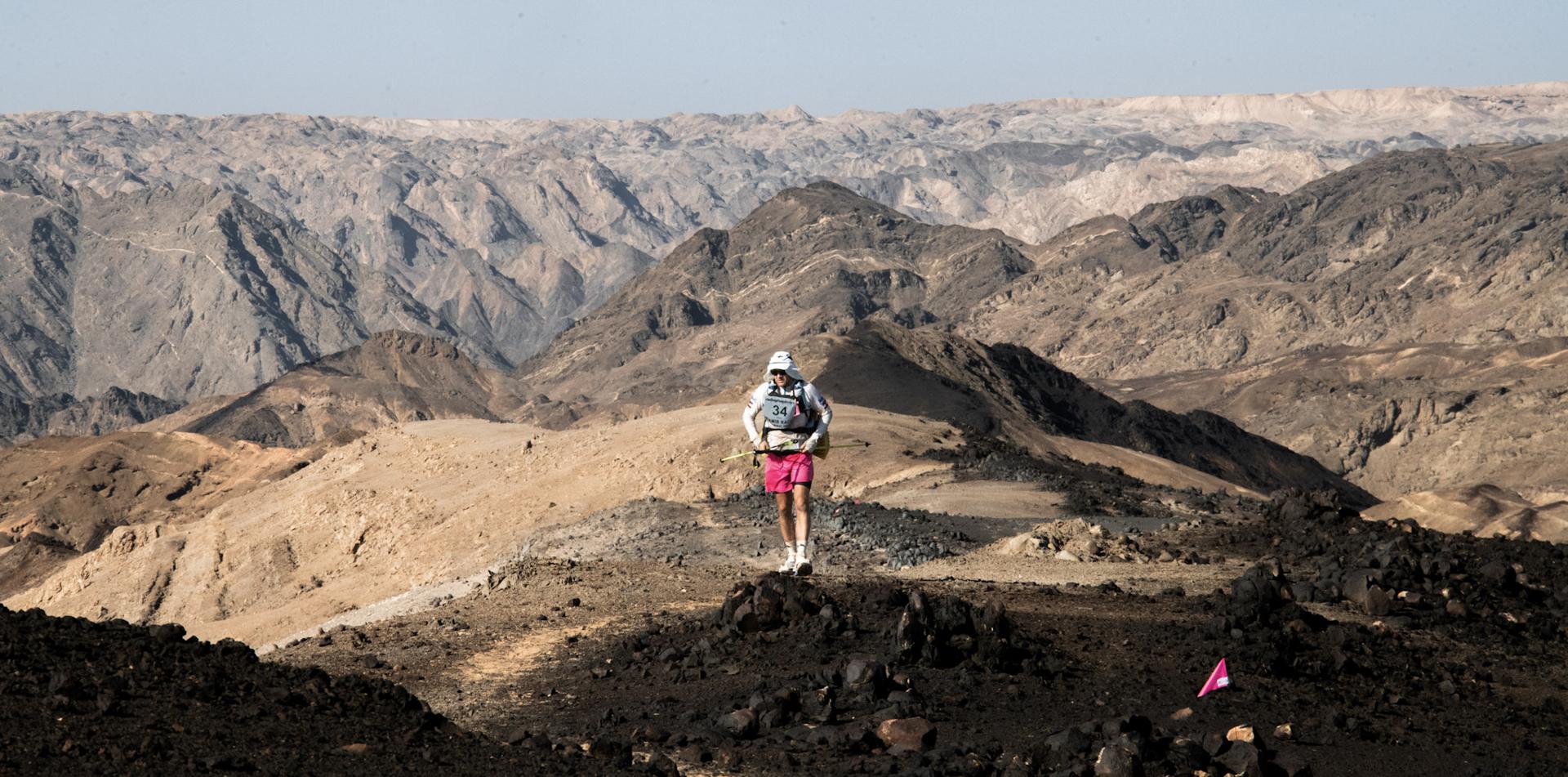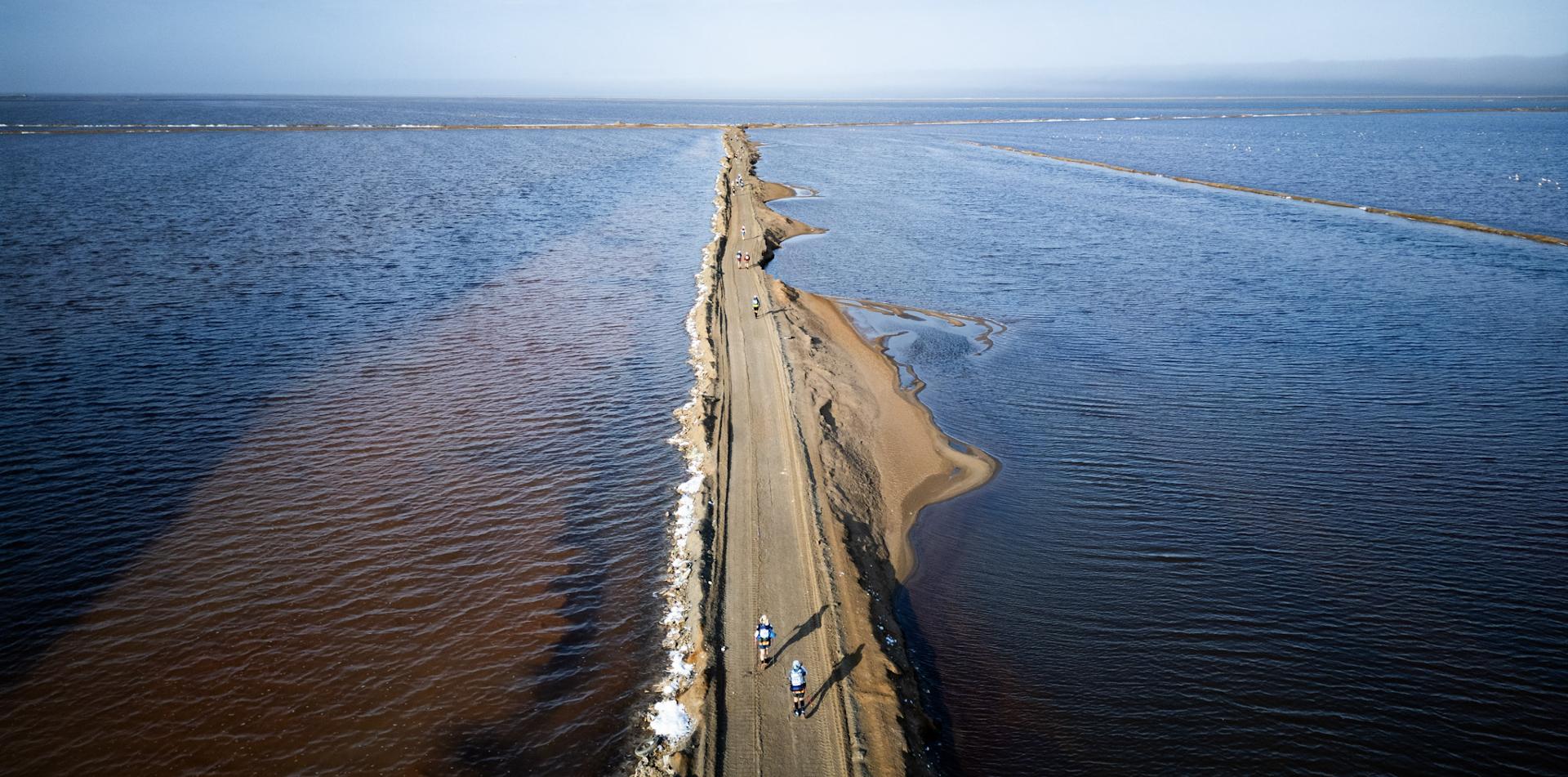Race Coverage

RACE Coverage
Namib Race (Namibia) 2026
Dates: 16–22 August 2026
Meeting Place: Swakopmund, Namibia
Distance: 250 kilometers over six stages
Format: Self-supported ultramarathon (participants carry all gear and food; tents, water, professional staff and medical support provided)
# of Participants: 100
| Category Fee | (USD) |
| Standard Entry | $4,200 |
| Late Entry (after 16 Apr 2026) | $4,500 |
| Deposit to Secure Place | $1,500 |

1. Event Background
- The Sahara Race / Namib Race was launched in 2005 as part of the 4 Deserts Ultramarathon Series.
- Now held primarily in the Namib Desert—considered the oldest desert on Earth—the course features towering red sand dunes, vast gravel plains, and surreal lunar landscapes.
- Participants traverse dramatic terrain from the interior desert to the Atlantic coastline, finishing in the coastal town of Swakopmund.
2. Participation Format
- Participants may run, walk, or combine both.
- Approximate distribution:
- 20% run the entire course
- 60% use a run/walk strategy
- 20% walk the entire distance
- Daily stage cut-offs are designed to accommodate all pacing styles.
- Course is marked with pink flags (no navigation is required). At night the course is marked with highly reflective tape.
3. Speed Benchmarks
- Fastest overall completion time: ~24 hours total racing time
- Slowest overall completion time: ~70 hours total racing time
- Average pace required to finish each stage within cut-off:
- Elite runners: 10–12 km/h (6.2–7.5 mph)
- Mid-pack runners: 6–8 km/h (3.7–5 mph)
- Steady walkers: 4 km/h (2.5 mph)
4. Cultural Features
Namibia offers a rich blend of indigenous heritage, German colonial architecture, and vast natural beauty. In Swakopmund, you’ll find pastel buildings, fresh seafood, biltong, and a laid-back vibe. In the desert, expect silence, solitude, and encounters with desert-adapted wildlife like oryx, springbok, and geckos. The landscape is cinematic—sunrises over red dunes, nights under star-filled skies, and the roar of Atlantic waves crashing into sand.
5. Course Highlights
- Namib-Naukluft National Park – home to the world’s tallest dunes
- Moon Landscape – surreal rock formations and dry riverbeds
- Kuiseb River Canyon – dramatic desert gorge
- Skeleton Coast – hauntingly beautiful shoreline
- Finish line in Swakopmund’s historic town centre
- Wildlife sightings: oryx, jackals, lizards, and seabirds
- Sand dunes, salt pans, gravel plains, and coastal cliffs
6. Weather Conditions: August in the Namib Desert
August offers cool mornings, warm afternoons, and dry desert air—ideal for trail running.
Temperature Overview (Average)
| Period |
High (°C / °F) |
Low (°C / °F) |
| 16–22 August |
20–26°C 68–79°F |
8–12°C 46–54°F |
Weather Notes
- Rainfall: Extremely rare
- Sunshine: 10–11 hours of daylight daily
- Wind: Coastal breezes and occasional desert gusts
- Humidity: Low, with cooler air near the coast
Local Saying:
“Where the Earth meets the stars.” The dry air and elevation make this one of the best places on Earth for stargazing.
7. Charity & Social Impact
RacingThePlanet and participants have supported causes including wildlife conservation, education, feeding children and clean water initiatives. Past projects have supported a desert lion conservation and food for children in villages near Swakopmund.
8. Travel & Logistics
- Fly into Walvis Bay Airport via Johannesburg or Cape Town. Arrange a transfer from Walvis Bay to Swakopmund
- Hotel accommodation is included before and after the race (two nights)
- Transfers to Camp 1 are arranged by RacingThePlanet
9. Participant Reflections
Quotes from previous participants:
“Running through the Namib was like stepping into a dream—raw, vast, and unforgettable.”
“The silence of the dunes, the resilience of the runners, and the kindness of the crew—those are the things I’ll carry forever.”
“I came to push my limits. I left with a deeper connection to the Earth.”
10. Next Steps
- Register
- Begin training and nutrition planning
- Read our Expert Advice. Review past photos and videos.
- Connect with fellow participants via RacingThePlanet’s social media channels: Instagram, Facebook, YouTube, LinkedIn, X, Tiktok
- Receive monthly updates to help you prepare for the Namib Race
11. What’s Included
An entry for a RacingThePlanet ultramarathon typically includes a comprehensive package designed to support participants through the entire race experience. Here's what's generally included:
- Race logistics and operations across all stages and checkpoints
- Hotel accommodation before and after the race (two nights)
- Shared tent accommodation at campsites each night (seven nights)
- Cultural experiences and local engagement where applicable
- Drinking water at campsites and checkpoints
- Medical support from wilderness doctors throughout the race
- Course markings
- GPS tracking
- Finisher’s medal
- Commemorative race jacket or shirt
- Post-race celebration and awards ceremony
Participants are responsible for their own food, mandatory gear, and travel to / from the race location. You can find full details on RacingThePlanet's official website.
12. RacingThePlanet UltraLite
RacingThePlanet UltraLite is a seven-day footrace designed for those seeking an ultramarathon experience with greater flexibility. Held alongside the full RacingThePlanet Ultramarathon, UltraLite participants run 10 or 20 kilometers per day and may skip stages if needed. Completing at least 50 kilometers earns a finisher’s medal. While competitors carry emergency gear, their main equipment is transported between camps. Participants stay in shared tents and enjoy the same stunning landscapes and cultural immersion. Open to anyone aged 18 and older, UltraLite offers endurance, adventure, and community in a more accessible format. Register here.







 Newsletter
Newsletter
 Online Store
Online Store
 Login
Login




